Estimated reading time: 8 minutes
Do you know how to grow pears?
They’re not a particularly popular type of fruit, probably because it’s so hard to buy good, ripe pears. We reckon they’re a top tree in the garden, and pretty easy to grow organically.
Here are our top 10 reasons why you need a pear tree in your garden:
1. Large choice of varieties
There are at least 20 varieties of pears and nashis commonly available. We have 37 in our Fruit Tree Database inside the Grow Great Fruit program, and there are hundreds of known varieties around the world.
Different varieties ripen at different times, from mid-January right through until early April in central Victoria. Choosing carefully can help to extend the fresh fruit season in your garden.
Plus, the late-ripening varieties keep well in the fridge. It’s not unrealistic to still be eating fresh home-grown pears right through winter.

2. Resistance to pests and diseases
Pears don’t get too many bugs or diseases. However, they’re not completely immune. The four most common problems experienced by pears are:
- Black spot is a common fungal disease that is worse in wet years. It’s very preventable with organic fungicides applied at the right time.
- Pear and cherry slugs can be a nuisance for some years. If left uncontrolled, this pest can severely damage or kill a young tree, however, they’re also relatively easy to control on young trees. On mature trees, they can make the tree look ugly but don’t affect the fruit in most cases. They have quite a few predators, and numbers tend to self-regulate as long as you’re not killing the good bugs with indiscriminate pesticide use.
- Pear blister mite. Harder to control because the mites live inside the leaves, but again, they don’t really do too much damage, though they can make the tree look ugly if you’ve got a bad case. Doesn’t affect the fruit.
- Birds. Like every other fruit tree you grow, if you want to pick fruit, you need to net them to prevent bird damage.
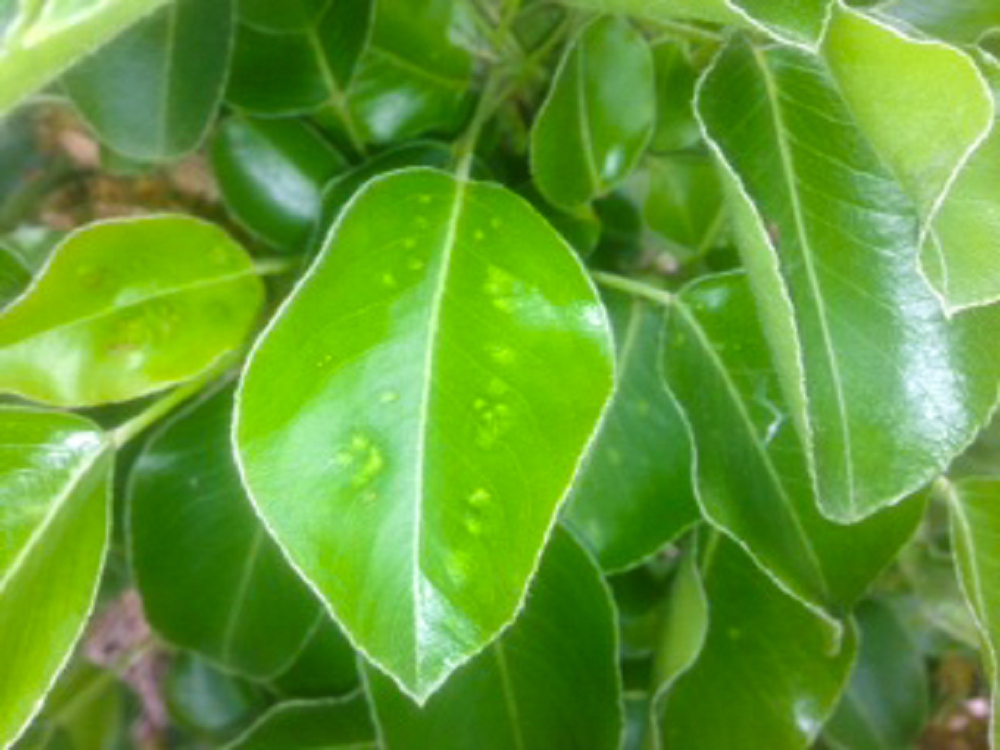
3. Pruning is easy
Most pear varieties are ‘spur-bearers’. This means they produce fruit on 2-year-old wood (and older), in the form of short fruit-bearing shoots known as spurs. Some varieties (e.g. Josephines) produce fruit at the end of longer shoots. These ones are known as ‘tip-bearers’. Once you’ve figured out which type you have, you’re halfway to knowing how to prune them!
The difference really is in how you treat the laterals. In spur-bearing varieties, they should be shortened back by about 1/3 to encourage the development of new side shoots and spurs. In tip-bearing varieties, it’s important not to shorten the laterals, because that’s where the fruit grows.
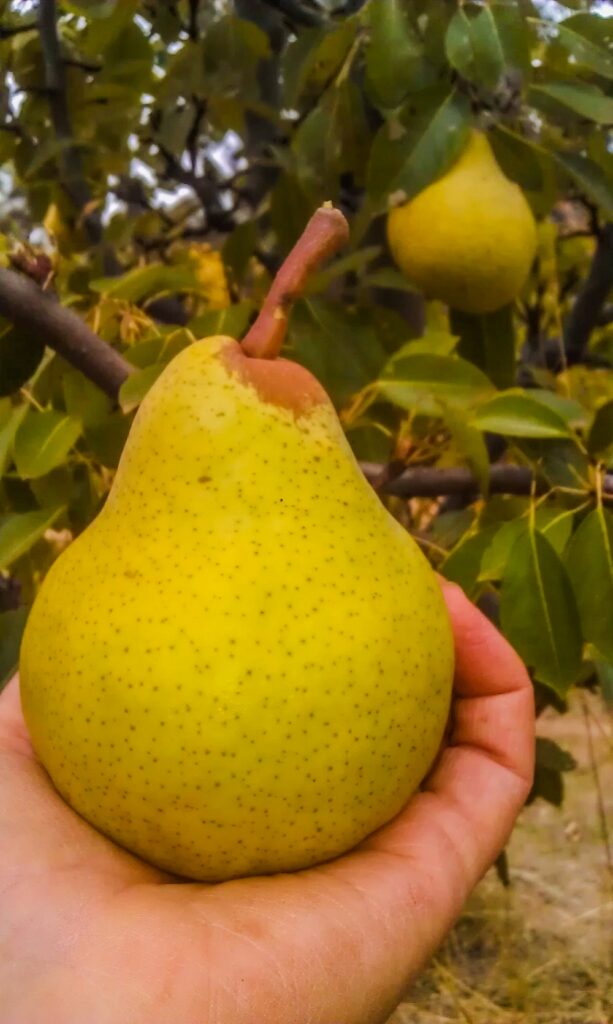
4. Don’t need tree-ripening
Most pears don’t need to be ripened on the tree. In fact, unlike other deciduous fruit, most pear varieties (except some of the early season ones) won’t ripen properly on the tree. Instead, they need cold storage for 2–6 weeks, followed by a period of ripening out of the fridge.
Pears ripen from the inside, Ripening them on the tree leads to both poor texture—either grainy or mushy—as well as poor keeping qualities.
How long do you need to leave them in the fridge before you ripen them on the bench? It’s a bit different for each variety, but here are some guidelines for the more common varieties:
- Beurre Bosc – don’t need cold storage
- Packham’s Triumph – need 1 month
- Winter Nelis – need 1 month
- D’Anjou – need 2 months
5. Pear trees don’t mind wet areas
Pears can tolerate quite boggy ground. They will often thrive in conditions that would make other fruit trees sulk (or worse – die!) This makes them a handy tree to pop in those difficult, hard-to-drain spots in the garden.
6. Growing your own trees is easy
It’s easy to grow your own pear trees. Gather seed in autumn, store it in damp sand over winter, and plant it out in spring. Most of the seeds will grow. Choose the biggest and strongest seedlings and discard the rest.
Now you have your rootstocks. In late summer, you can bud-graft your desired variety onto the rootstock (a technique called ‘budding’). In late winter cut back to the bud, and over summer it should grow and form your new tree.
Voila! The following winter you’ll have a brand new pear tree to plant in your garden – for free!
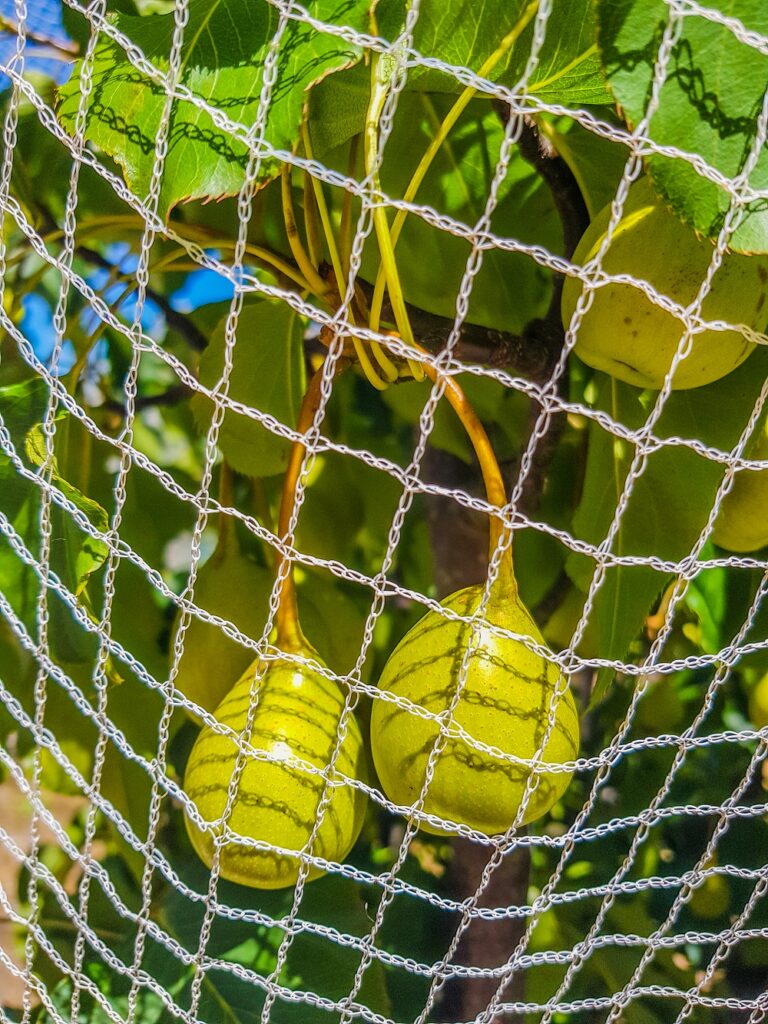
7. Growing your own dwarf trees is easy
It’s easy to grow your own dwarf pear trees!
Follow the same process as above, but use quince seed instead of pear to grow your rootstock. Then when you graft your pear variety onto the rootstock it will grow into a much smaller tree. This is very handy for short gardeners, or if you’re trying to squish a lot of fruit trees into a small space.
8. Frost hardiness
Pears are relatively frost-hardy, though not completely immune. Because they flower so late, they are much less likely to succumb to the spring frosts that can be so devastating to apricots and stone fruit. This makes them the best choice for the frosty spots in your garden.
Having said that, if a really heavy frost is forecast while they’re flowering they may still benefit from throwing some frost cloth (or even an old sheet) over them to prevent this sort of damage.
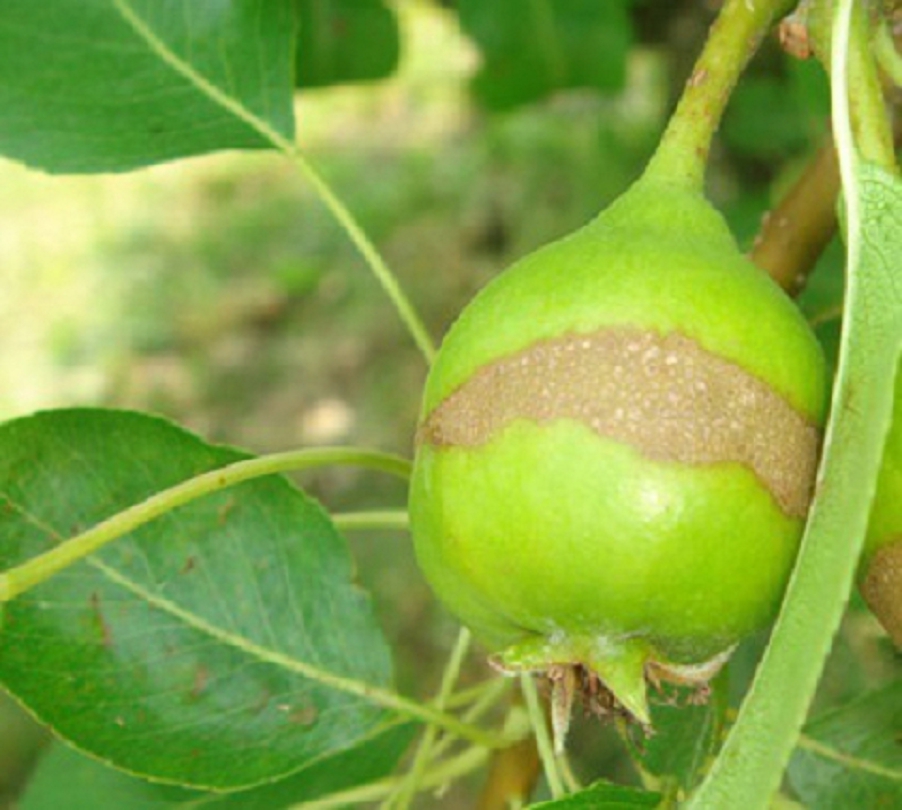
9. They’re beautiful
Pear trees look great all year. They have stunning white flowers in spring, large, dark green glossy leaves in summer, and a beautiful display of colour in autumn.
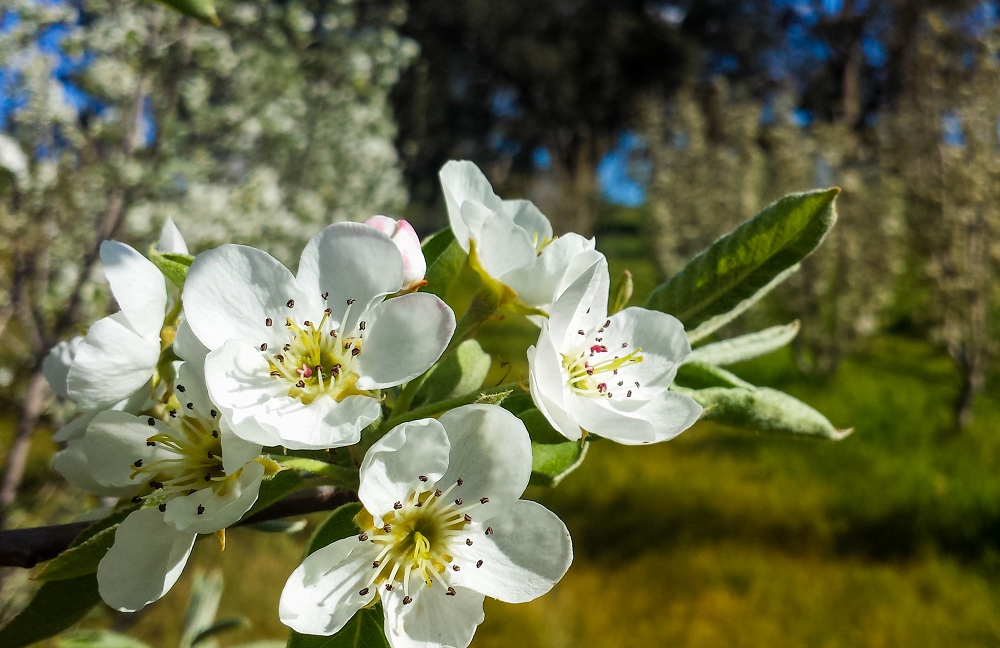
10. They’re delicious, healthy, and useful
This is really 3 reasons in 1. The first is that pears are delicious to eat once they’ve been properly ripened.
Pears are also super-healthy. They are high in both soluble and insoluble fibre, which helps keep you feeling full for longer. They’re low GI, so are a good fruit to eat for people who are trying to manage their weight. They’re rich in folate, copper, and potassium, and have heaps of vitamin C.
Pears are great to eat fresh and are also easy to preserve with a multitude of techniques. Bottled pears, spiced pears, chutney, dried pears, and pickled pears are a few that come to mind. They also lend themselves to simple and stylish desserts, like pears poached in orange juice.
So, if you’ve got a tricky spot in the garden – or even if you haven’t – consider a pear tree. They’re beautiful, they’re delicious and they’re easy to grow!
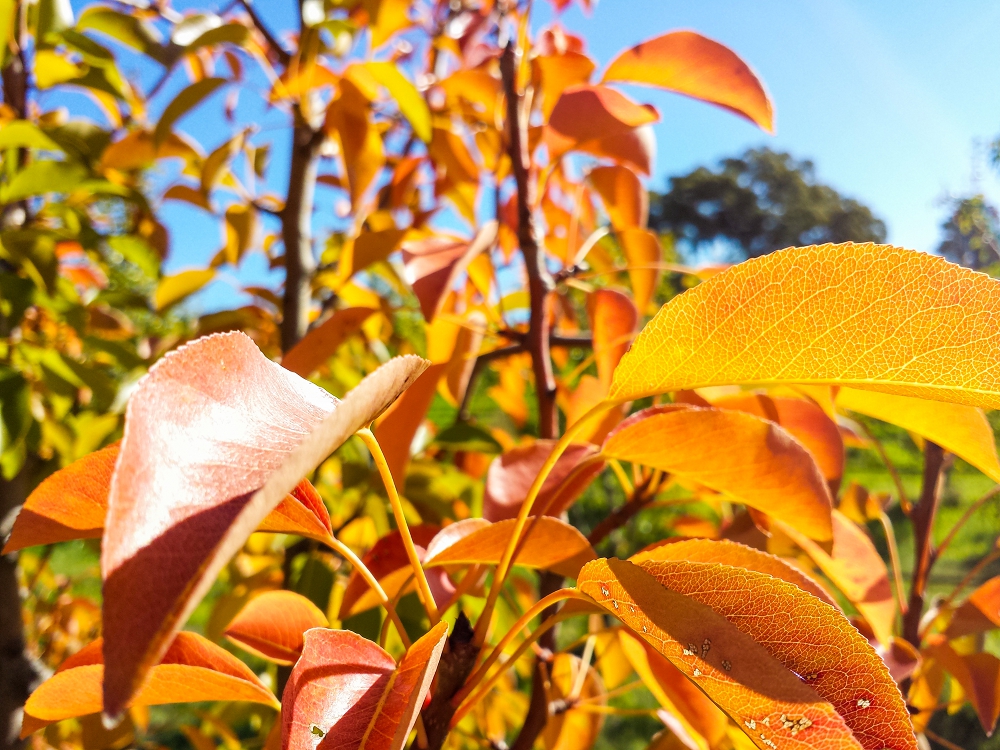
Related Articles
How can you get support for a community orchard?
Find out how to access resources and support to start a community orchard and build food security and resilience.
Discover heritage apple trees you’ve never heard of
There are hundreds of heritage apple trees you’ve probably never heard of. We’re aiming to bring as many as possible back into fashion.
Extend your fruit season with late-ripening fruit trees
Extending your fresh fruit season with late-ripening fruit trees is an easy way to increase food security and decrease risk.

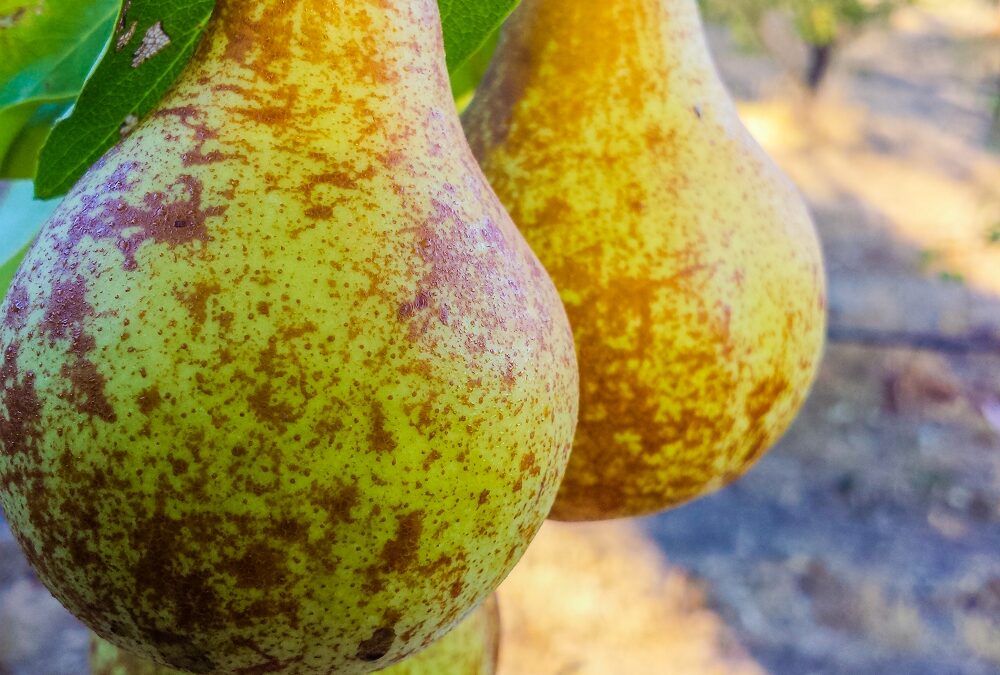


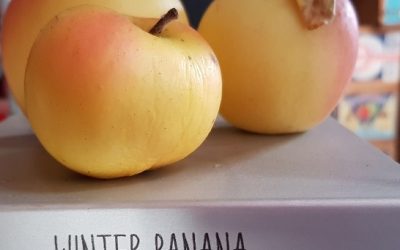
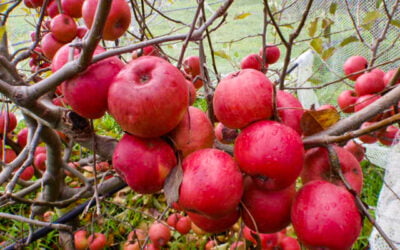


I have a Doyn du comice and it took 10 or 11 years to produce its first crop and when it did, what a prolific crop! I probably should have done some thinning. They were delicious and juicy, and I thought they were the most delicious pears I’d ever tasted! And my late husband missed out on them..
The next year it hardly had any fruit no doubt because of the mighty effort it put forth for its first crop. The next year it had.a few, The following year which is this year, it looked like it was going to be a good crop. But rats or mice took bites off the tops of them so they fell prematurely. I’ve just picked what was left because they were dropping off. They are still hard. And most of them are gigantic – the size of two of average sized pears.
Having just read what you say about picking pears before they are ripe, and refrigerate them, which I never knew, I’m wondering if I should do this with my comices.
Having just submitted a long one, I’ll keep this one short. Thank you for sharing your knowledge about pears.
About old storage, what about conference, William, and corella pears?